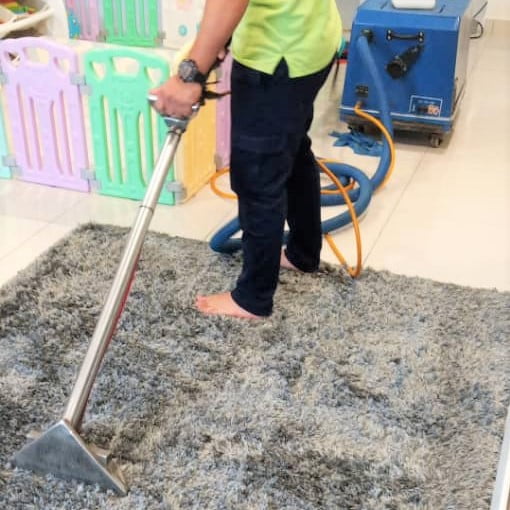Are you dealing with the aftermath of a flooded carpet? Don’t panic. In this article, we will provide you with expert tips to help you go from damage control to full restoration.
Water damage can wreak havoc on carpets, leading to mold growth, unpleasant odors, and structural issues. However, with the right knowledge and tools, you can minimize the damage and restore your carpet to its former glory.
Our professional tips will guide you step-by-step through the process of dealing with carpet flooding. We’ll cover everything from initial assessment and water extraction to drying techniques and mold prevention. Whether it’s a burst pipe, a leaky roof, or a natural disaster that caused the flooding, our advice will help you take action quickly and effectively.
Remember, time is of the essence when it comes to carpet flooding. The longer water remains trapped, the greater the likelihood of irreversible damage. So, let’s jump right in and learn how to turn your carpet disaster into a successful restoration project.
Understanding the risks and causes of carpet flooding
Carpet flooding can be caused by a variety of factors, including natural disasters, burst pipes, faulty appliances, and leaky roofs. Whatever the cause, it’s important to understand that water damage can have serious and long-lasting effects on your carpets. These effects can range from discoloration and stains to structural damage, unpleasant odors, and mold growth.
Mold is a particularly dangerous consequence of water damage, as it can lead to respiratory problems, allergic reactions, and other health issues. It’s essential to take swift action to prevent mold growth and other forms of damage when dealing with carpet flooding.
Immediate steps to take when dealing with carpet flooding
The key to minimizing the damage caused by carpet flooding is to act quickly and decisively. The longer water remains trapped in your carpets, the greater the likelihood of permanent damage. Here are some immediate steps you should take when dealing with carpet flooding:
1. Turn off the power to the affected area to prevent electrical shocks or fires.
2. Remove any furniture or other items from the affected area to prevent further damage.
3. Extract as much water as possible from the carpet using a wet/dry vacuum or other extraction equipment.
4. Open windows and doors to increase ventilation and promote air circulation.
5. Use fans or dehumidifiers to dry out the affected area as quickly as possible.
Assessing the extent of the damage
Once you’ve taken initial steps to extract water and promote drying, it’s important to assess the extent of the damage. This will help you determine the best course of action for restoring your carpet. Here are some things to look for when assessing the damage:
1. Discoloration or staining of the carpet fibers.
2. A foul or musty odor.
3. Signs of mold growth, such as black or green spots.
4. Changes in the texture or structure of the carpet fibers, such as matting or fraying.
If the damage is relatively minor, you may be able to restore your carpet using DIY techniques. However, if the damage is extensive or if mold growth is present, it’s best to seek professional help.
Professional carpet drying techniques
Professional carpet restoration companies use a variety of techniques to dry out carpets and prevent mold growth. These techniques typically involve specialized equipment and expertise that are beyond the reach of most homeowners. Here are some of the techniques that professionals use to dry out carpets:
1. Hot water extraction: This technique involves the use of a high-pressure water extraction system to remove water from the carpet fibers.
2. Air movers: These powerful fans are used to promote air circulation and speed up the drying process.
3. Dehumidifiers: These devices remove moisture from the air, reducing the humidity level in the affected area.
4. Moisture meters: These tools are used to monitor the moisture level in the carpet and ensure that it is drying properly.
Removing water and moisture from the affected area
In addition to drying out the carpet itself, it’s important to remove water and moisture from the affected area. This will help prevent mold growth and other forms of damage. Here are some techniques for removing water and moisture:
1. Use a wet/dry vacuum to extract as much water as possible from the carpet and surrounding areas.
2. Use dehumidifiers to reduce the humidity level in the affected area.
3. Use fans to promote air circulation and speed up the drying process.
4. Remove any wet or damaged insulation or drywall to prevent mold growth.
Restoring and salvaging carpet after flooding
If your carpet has suffered water damage, you may be wondering if it’s salvageable. The answer depends on the extent of the damage and the type of carpet you have. Here are some tips for restoring and salvaging carpet after flooding:
1. Steam clean the carpet to remove any dirt or debris that may have accumulated during the flooding.
2. Use a carpet cleaner to remove any stains or discoloration caused by the water damage.
3. Apply a disinfectant to the carpet to kill any bacteria or mold that may be present.
4. If the damage is extensive, consider replacing the carpet entirely.
Preventive measures to avoid future carpet flooding
Prevention is the best way to avoid the need for carpet restoration after flooding. Here are some tips for preventing future carpet flooding:
1. Keep gutters and downspouts clean and free of debris to prevent water from backing up and overflowing onto your roof.
2. Install a sump pump in your basement to prevent water from accumulating and flooding your carpet.
3. Inspect your plumbing regularly and fix any leaks or other issues as soon as they arise.
4. Keep your home’s humidity level below 60% to prevent mold growth.
Hiring professional carpet restoration services
If your carpet has suffered extensive water damage or if mold growth is present, it’s best to seek professional help. Professional carpet restoration companies have the equipment, expertise, and experience to restore your carpet to its former glory. Here are some tips for hiring a professional carpet restoration service:
1. Look for a company that has experience dealing with water damage and mold remediation.
2. Check the company’s references and reviews to ensure that they have a good reputation.
3. Make sure the company is licensed and insured.
4. Get a detailed estimate of the work that will be done and the cost involved.
Insurance considerations for carpet flooding
If your carpet flooding was caused by a natural disaster or other covered event, your homeowner’s insurance may cover the cost of restoration. However, it’s important to check your policy carefully to determine what is covered and what is not. Here are some tips for dealing with insurance companies after carpet flooding:
1. Document the damage with photographs and written descriptions.
2. Keep all receipts and invoices related to the restoration process.
3. File your claim as soon as possible to avoid any delays.
4. Work closely with your insurance adjuster to ensure that all necessary repairs are covered.
Conclusion: Maintaining a safe and dry environment for your carpets
Carpet flooding can be a stressful and overwhelming experience, but with the right knowledge and tools, you can minimize the damage and restore your carpet to its former glory. Remember to act quickly when dealing with carpet flooding and to seek professional help if necessary. By taking preventive measures and maintaining a safe and dry environment for your carpets, you can avoid the need for restoration in the future.



